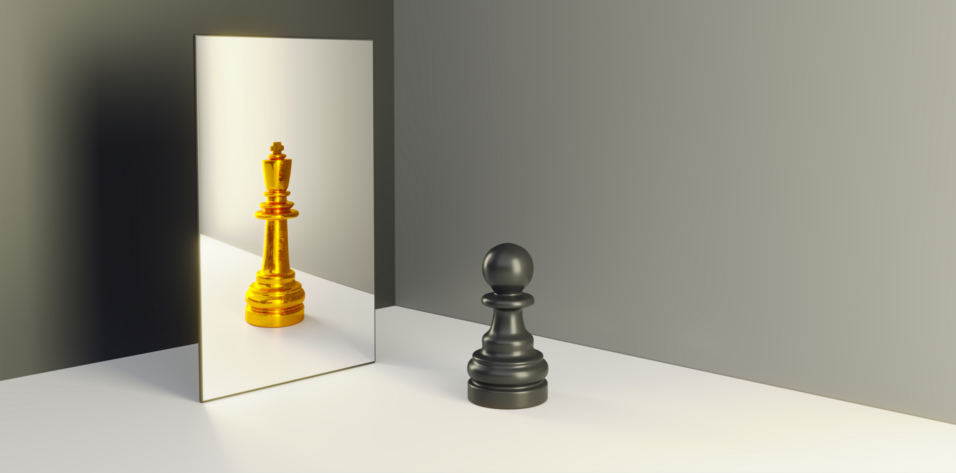
Innovation—the process of creating value by finding novel solutions for existing or emerging problems—is crucial for organizational growth. It’s the backbone of competitive advantage and a bulwark against change. On the other hand, innovation is rarely straightforward. It is often marred by unpredictable twists and turns and requires trial and error, risk-taking, and responsiveness to feedback. At times, innovation demands a radical strategy shift, a process known as pivoting, or the ability to swiftly change course when an initial concept fails to satisfy market needs. Despite the challenges of pivoting, it can also yield transformative outcomes. In this editorial, a remarkable example of pivoting in our field is highlighted.
Consider the term unmet clinical need—a condition or symptom inadequately addressed by existing therapy. In the past, for example, clinicians lacked reliable methods to gain a precise understanding of our patient’s visual behavior through objective data. The unanimous belief was that objective data could drive improved decisions about refractive targets and IOL designs, leading to reduced postoperative dependence on spectacles for patients. Enter Vivior, a wearable device that collects data related to ambient, UV, and blue light exposure, working distance, and ergonomic considerations such as body and head position. The anticipated uptake by ophthalmologists, however, was lacking because most felt they already had access to the necessary information through history taking and subjective data. Optometrists, on the other hand, began using Vivior to prescribe progressive contact lenses tailored to individual needs.
The turning point emerged when Vivior targeted the end consumer, like manufacturers of wearable devices designed to track heart rate, arrhythmias, and steps taken.
Research shows that the gaming industry is growing at an alarming rate. The sector encompasses an array of games, devices, platforms, and audiences. Gaming has been adopted widely in academic and professional fields. Verified Market Research indicates that the gaming market, valued at US$203.4 billion in 2021, is expected to reach US$492.5 billion by 2030.1 Numerous factors are driving growth, including increased smartphone and tablet use, higher internet penetration and bandwidth, advancements in cloud technology and AI, popularity of electronic sports, and the emergence of new game genres. The average gamer’s age is 34, which aligns with the demographic seeking vision correction surgery.
Digital eye strain (DES), characterized by visual and ocular symptoms arising from prolonged use of digital devices, is a significant concern. With lockdown restrictions limiting outdoor activities and increasing digital learning, DES prevalence in children rose to between 50% and 60%, triggering issues such as esotropia and vergence abnormalities.2 Furthermore, myopia is growing at a concerning rate. Several strategies and technologies have been proposed to alleviate DES, but increased awareness and adherence to the practices and further research are essential.
Participating in outdoor activities for at least 13 hours per week can reduce the likelihood of children developing myopia.3 Vivior’s proposal of 1,000 vital vision minutes per week during gaming hours provides a platform for improved ocular health.
Consider the potential market size: Approximately 3.3 billion people worldwide engage in regular screen-based gaming, and daily screen time exceeds 7 hours. This trend extends to young children.3
Gaming influencers play a significant role in the gaming world. Some attract millions of followers on platforms such as YouTube and Twitch. Notably, Ninja, a globally influential gamer, is partnering with Vivior to promote healthier gaming strategies to combat DES. Prominent games such as Call of Duty: Warzone, Minecraft, and Fortnite have massive user bases.4
So how did Vivior pivot? By partnering with GameSquare, a NASDAQ-listed company and the electronic sports arm of the Dallas Cowboys, to encourage healthier gaming. The Vivior device is attached to headphones to monitor eye and body posture during gaming. In-game avatars suggest resting, stretching, and spending time outdoors. Even without explicit sharing, eye care professionals can access Vivior data, ensuring personalized care based on objective visual behavior. Pivoting has helped Vivior to directly reach the end consumer, presenting an opportunity to reshape the entire eye care industry.
Here’s to healthier gaming for all gamers.
Arthur B. Cummings, MB CHB, FCS(SA), MMED(OPHTH), FRCS(EDIN), FWCRS
Chief Medical Editor
Physician CEO, Wellington Eye Clinic, and Consultant Ophthalmologist, Beacon Hospital, Dublin, Ireland
Financial disclosure: Board of Directors (Alcon); Medical advisory board (Vivior)
1. Global gaming market size by console (box/cd game purchase, in-app purchase based), by purchase type (tv / gaming console, mobile gaming), by geographic scope and forecast. Verified Market Research. April 2023. Accessed July 10, 2023. https://www.verifiedmarketresearch.com/product/gaming-market/
2. Cai T, Zhao L, Kong L, Du X. Complex Interplay Between COVID-19 Lockdown and Myopic Progression. Front Med (Lausanne). 2022;21(9):853293.
3. Wang J, Li Y, Musch DC, Wei N, Qi X, Ding G, et al. Progression of myopia in school-aged children after COVID-19 home confinement. JAMA Ophthalmol. 2021;139:293-300.
4. Marley T. 7 Potential Video Games You Can Enjoy on macOS. Ricky Spears. February 9, 2023. Accessed July 12, 2023. https://www.rickyspears.com/game/video-games-on-macosan/


